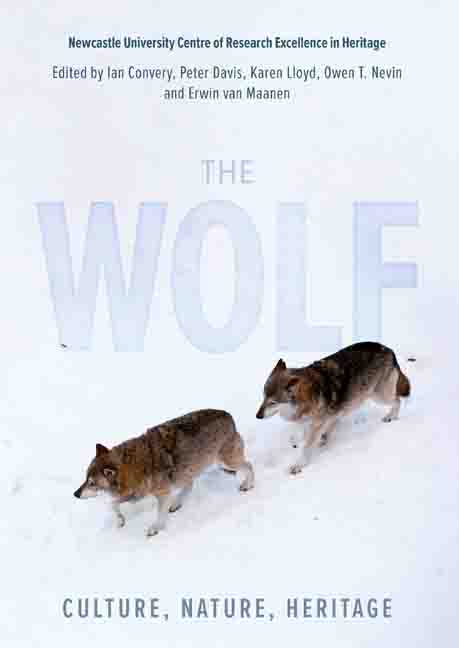Book contents
- Frontmatter
- Dedication
- Contents
- List of Illustrations
- Preface and Acknowledgments
- List of Abbreviations
- Poem: Trophic Cascade by Camille T Dungy
- Foreword
- Part I Imagining the Wolf
- Part II What Makes the Wolf
- Part III Return of the Wolf
- Part IV Personal Encounters
- Afterword: The Ecological Disadvantage of Living on an Island
- Glossary
- List of Contributors
- Index
16 - Pushing the Ecological Niche: A Sea Wolf Called Takaya
Published online by Cambridge University Press: 10 January 2024
- Frontmatter
- Dedication
- Contents
- List of Illustrations
- Preface and Acknowledgments
- List of Abbreviations
- Poem: Trophic Cascade by Camille T Dungy
- Foreword
- Part I Imagining the Wolf
- Part II What Makes the Wolf
- Part III Return of the Wolf
- Part IV Personal Encounters
- Afterword: The Ecological Disadvantage of Living on an Island
- Glossary
- List of Contributors
- Index
Summary
Can you introduce Takaya – a highly unusual individual from Canada's west coast populations of sea wolves?
A wild male wolf lived for eight years alone on a small cluster of islands off the south end of Vancouver Island and came to be known as Takaya, which is the Indigenous Coast Salish word for wolf (or ‘Staqeya’ in the Lekwungen dialect of the local Songhees Nation). He was one of a unique population of wolves called coastal or sea wolves that live in the coastal habitats of British Columbia and the Alexander Archipelago of Alaska.
Sea wolves are genetically distinct from inland grey wolves and represent adaptation to a unique environment (Munoz-Fuentes et al 2009), inhabiting shorelines and islands to the west of British Columbia's Coast Mountain range. According to an article in a 2015 issue of National Geographic magazine (McGrath 2015), ‘Gray wolves have adapted to the diverse ecosystem of British Columbia's Coast Mountains since the end of the last ice age. In the outer shore temperate rain forests there are two types of coastal wolves which researchers suggest diverged from a common gray wolf ancestor into what's called an evolutionarily significant unit, or an ESU, that is worthy of consideration’ (Darimont and Paquet 2000). These sea wolf populations are sometimes divided into coastal island and coastal mainland wolves. The coastal mainland wolves have greater access to traditional prey such as black-tailed deer and small mammals, and they also eat salmon during the spawning season, whereas the coastal island wolves rely on marine life such as barnacles, crabs, clams, squid, seals, sea otters, the carcasses of whales, and other sea life that washes up on the beaches.
At one time, the sea wolf population extended from Alaska to California, but now their populations exist primarily from southeastern Alaska down to north of Vancouver, BC, including Vancouver Island, which is believed to hold approximately 150–200 animals. There is currently no estimate available for the number of sea wolves on the BC mainland and adjacent islands.
- Type
- Chapter
- Information
- The WolfCulture, Nature, Heritage, pp. 179 - 190Publisher: Boydell & BrewerPrint publication year: 2023



